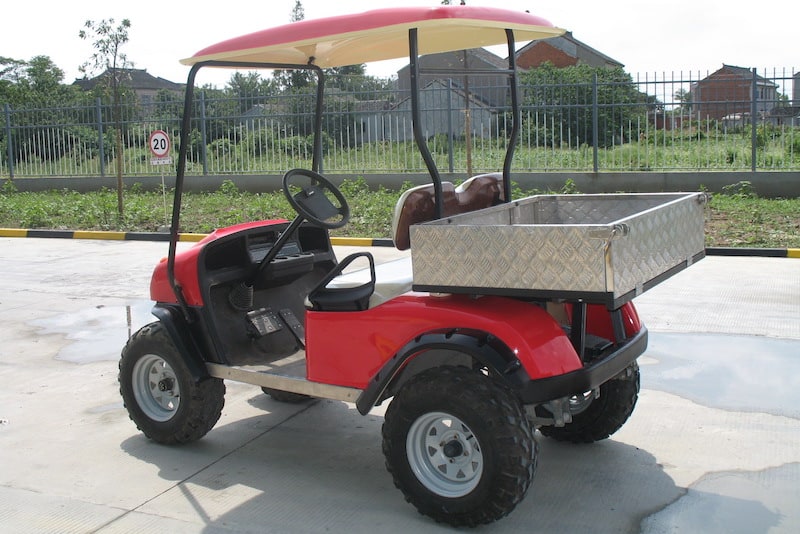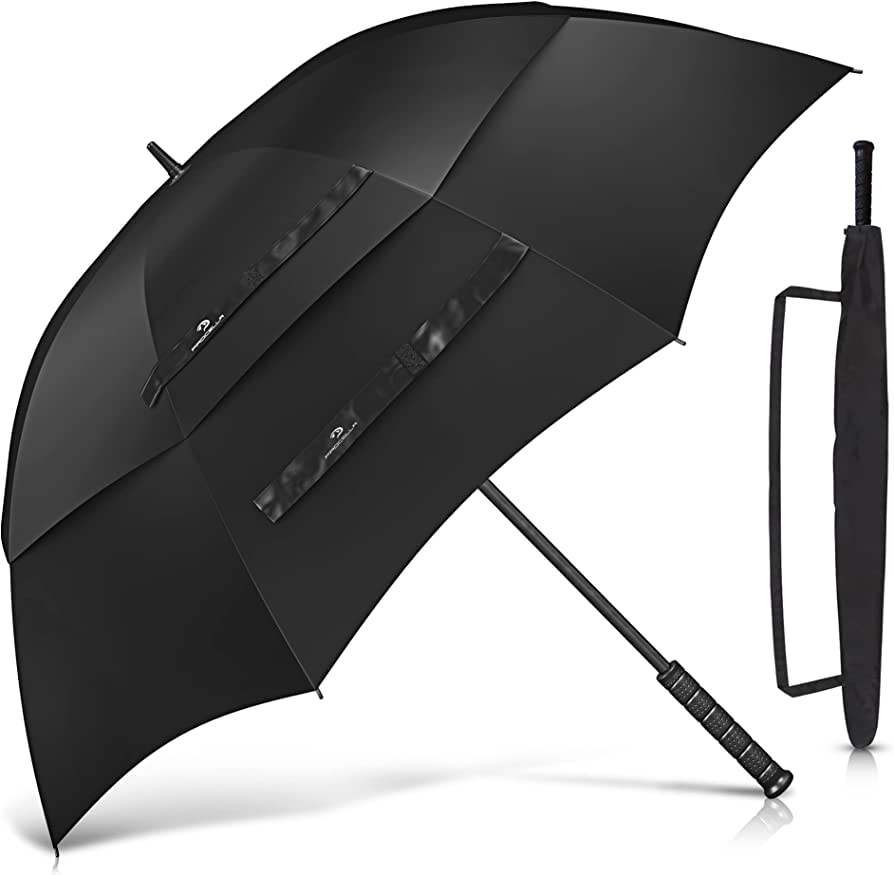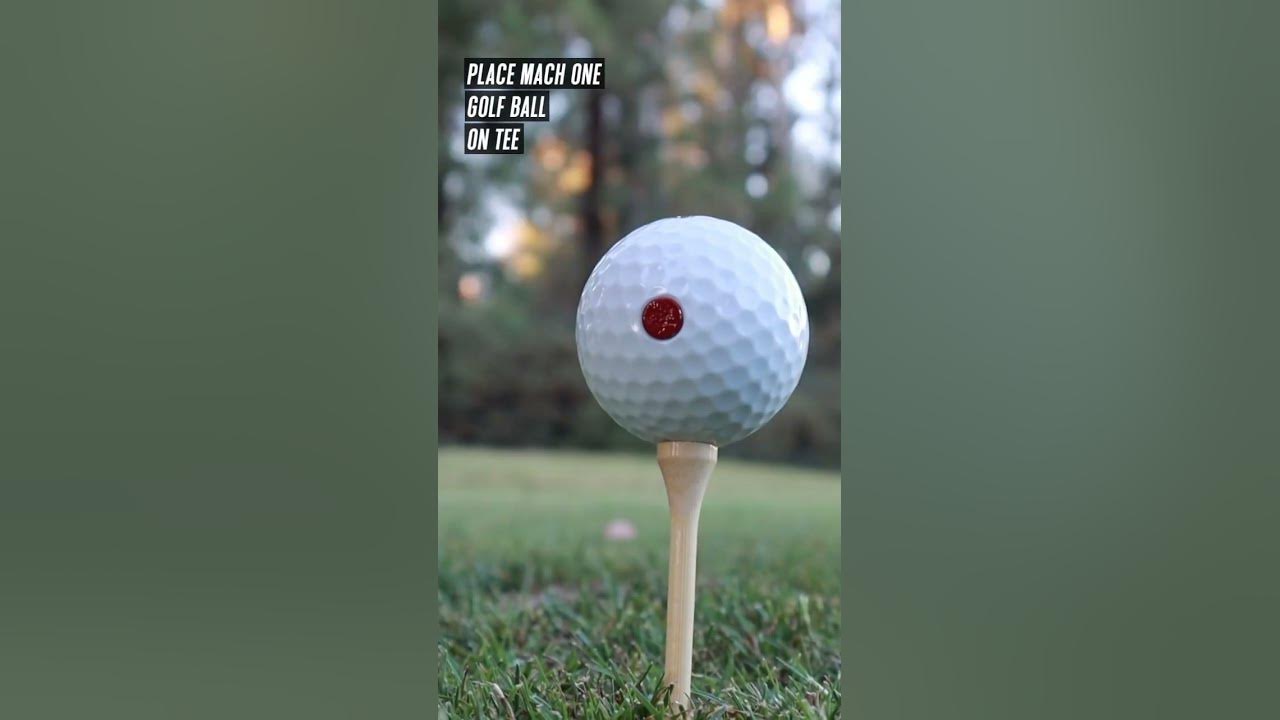Unlocking the Secrets of Flighted Golf Shots
In golf, flighted refers to hitting a shot with a specific trajectory and height. Flighted shots are typically used to control the distance a ball travels and to navigate around obstacles on the course.
Golfers must often adjust their shots to compensate for wind, rough terrain, and other elements that affect ball flight. By mastering the art of flighted shots, players can more accurately control their ball’s trajectory and achieve better results on the course.
There are several techniques for producing a flighted shot, including varying the club face angle, changing the swing path, and altering the ball’s position in the stance. With practice, golfers can learn to hit the ball at different heights and distances, allowing them to adapt to a wide range of course conditions and challenges.

Credit: www.golfworks.com
The Science Of Flighted Shots: Understanding The Physics Behind It
Golf enthusiasts and professionals recognize the significance of flighted shots in the sport. A player can take a higher trajectory while still covering a considerable distance with these well-oriented shots. However, hitting a flighted shot is not an easy feat.
It requires mastering certain techniques and considerations that impact the physics behind it.
Explaining The Concept Of Ball Trajectory And Its Factors Affecting It
To hit a flighted shot, a player must understand the concept of ball trajectory and its factors. Ball trajectory is the path the ball takes after impact with the clubface. The trajectory of the ball is influenced by a variety of forces, such as gravity, air resistance, and spin.
The following factors can influence ball trajectory:
- Clubhead speed
- Loft angle
- Spin rate
- Wind conditions
All of these factors work together to determine the final destination of the ball.
The Role Of Spin And Its Effect On Ball Flight
Spin plays an essential role in the flight of the golf ball. Backspin, which is imparted on the ball by an open clubface, produces lift and checks the ball’s momentum, causing it to stop quickly on the green. On the other hand, sidespin affects the ball’s trajectory, causing it to curve to the left or right.
Therefore, it is imperative to consider spin and its direction while aiming for a flighted shot.
The following factors can affect the spin rate of the ball:
- Clubface angle
- Swing path
- Angle of attack
- Clubhead speed
Identifying The Correct Launch Angle And Speed For Optimal Results
To achieve optimal results, it is critical for a golfer to identify the correct launch angle and speed. The launch angle is the angle at which the ball departs from the clubface, while the speed is the velocity at which the ball travels.
Both of these factors can significantly affect the ball’s trajectory, distance, and flight time.
Factors impacting the launch angle and speed include:
- Loft angle
- Swing speed
- Angle of attack
- Backspin rate
Hitting a flighted shot requires mastering specific techniques and understanding the physics behind it. The trajectory of the ball is determined by a variety of forces, with spin being one of the most critical factors. Identifying the correct launch angle and speed for a flighted shot is crucial for achieving optimal results.
By considering all these factors, golfers can hit a high, distance-covering flighted shot to perfection.
Building A Solid Foundation For Solid Contact
Golf is a sport that requires great precision and technique. One important shot in golf is the flighted shot. A flighted shot is a golf shot that has a low trajectory and a shorter distance. In this section, we will explore the important techniques to build a solid foundation for solid contact when hitting a flighted shot, and we will examine the common mistakes in grip and stance that can affect ball flight.
The Importance Of A Proper Setup And Posture When Hitting A Flighted Shot
The first step in hitting a successful flighted shot is to have a proper setup and posture. Here are some key points to keep in mind:
- Proper alignment is crucial; ensure that your feet, hips, and shoulders line up with your target
- Start with your feet shoulder-width apart and your feet parallel to the target line
- Bend your knees slightly and lean forward with your arms hanging naturally in front of you
- Keep your spine straight and your chin up
Addressing Common Mistakes In Grip And Stance That Affect Ball Flight
Proper grip and stance are essential in hitting a successful flighted shot. Here are some common mistakes that players make when hitting a flighted shot and some tips to avoid them:
- Loose grip: A loose grip can cause the clubface to open up at impact, leading to a higher shot than intended. Ensure you grip the club firmly but not too tight.
- Stance too wide: Having a stance too wide can prevent your body from making a proper turn, leading to an incorrect swing path. Keep your feet shoulder-width apart.
- Ball too far back: Placing the ball too far back in your stance can cause the club to bottom out too early, leading to a low shot with too much spin. Play the ball slightly back in your stance, towards the middle of your stance.
- Lack of clubface control: Ensuring the clubface is square at impact is crucial. Practice hitting shots with different clubface angles and learn to control them.
Practicing Techniques To Achieve A Consistent Strike
Lastly, practice is key in achieving a consistent strike when hitting a flighted shot. Here are some techniques to practice:
- Hit balls off a tee to help develop a consistent swing path and a smooth swing.
- Practice hitting partial shots with different clubs to learn how to control the ball’s flight.
- Focus on hitting down on the ball, taking a divot after the ball is struck.
Overall, hitting a successful flighted shot requires proper technique and practice. Focus on a proper setup and posture, address common mistakes in grip and stance, and practice consistently to achieve solid contact with each shot.
Understanding Club Selection For Flighted Shots
Golfers are often challenged by various shot types on different course conditions. One of the most crucial skills in golf is knowing how and when to flight the ball. To understand what flighted shots are, it is vital to understand the role of club selection, clubface angle, and loft.
In this blog post, we’ll delve into the essentials of how to flight the ball by evaluating different types of clubs for different needs, knowing the importance of the clubface angle and loft in achieving the desired shot, and when to use irons versus hybrids or fairway woods.
Evaluating Different Types Of Clubs For Different Needs
To evaluate the different types of clubs for different needs, golfers must know the characteristics of each club. Here are some key points:
- Wedges (48 – 60 degrees): Ideal for hitting short, high shots that require precision around the greens.
- Irons (3 – 9): Versatile clubs that offer golfers different options to control the trajectory and distance of their shots.
- Hybrids: Perfect clubs for beginners or high-handicapped golfers who can struggle with long irons. Hybrids are also easier to hit out of the rough.
- Fairway woods: Often used for long shots off the tee, fairway woods are versatile clubs that can hit the ball high or low, depending on the golfer’s need.
The Role Of Clubface Angle And Loft In Achieving The Desired Shot
The clubface angle and loft significantly impact the ball’s trajectory. Here are some key points:
- Loft: The higher the loft, the higher the ball will travel, and vice versa. To achieve a higher trajectory for flights, select a club with a higher loft.
- Clubface angle: The clubface angle determines the direction the ball will travel. If the face is open, the ball will travel to the right, and if the face is closed, the ball will travel to the left. To flight the ball, ensure the clubface angle is set up straight or slightly closed.
When To Use Irons Versus Hybrids Or Fairway Woods
Choosing between irons versus hybrids or fairway woods can be challenging. It is crucial to select the appropriate club for each shot to optimize the results. Here are some key points:
- Irons: Ideal for players who want precision and control over their shot direction and distance.
- Hybrids or fairway woods: Better for players who want to hit high and forgiving shots and have difficulties executing a consistent swing with long irons.
Flighting the ball is an essential skill that every golfer must master. By evaluating different types of clubs, knowing the clubface angle and loft’s role, and when to use each type of club, golfers can optimize the results of their shots.
Remember that practice makes perfect, and by continuous evaluation, you’ll be able to develop your skills and abilities.
Developing A Plan For Course Management
Analyzing Different Situations On The Course And Identifying When To Use Flighted Shots
Golf is a game of strategy, and selecting the right shots in different situations can make all the difference between a good and a bad round. Here are some key factors to consider when deciding whether to use a flighted shot:
- The lie of the ball: Is the ball sitting up or buried in the rough? This will determine whether you can effectively get the ball airborne with a flighted shot.
- Wind direction and speed: A strong headwind can make it difficult to hit a high shot that stays on course, while a tailwind may allow you to hit a longer, more penetrating flighted shot.
- Hazards: If there are hazards such as bunkers or water in play, a flighted shot can help you avoid them effectively.
- Distance to the green: Flighted shots tend to have a shorter carry distance than full shots, so you’ll need to consider the yardage to the green and the obstacles in between to make the best decision.
Planning For Elements Such As Wind And Hazards When Deciding To Hit A Flighted Shot
When hitting a flighted shot, it’s important to take into account the specific conditions on the course. Here are some tips to keep in mind:
- Wind: Always check the direction and speed of the wind before hitting your shot. If the wind is strong, you may need to adjust your club selection or the angle at which you hit the ball to compensate for its effects.
- Hazards: If there are hazards such as bunkers or water in play, try to hit a shot that takes them out of play. Depending on the specific hazard, this might mean hitting a higher or lower shot to clear it safely.
- Green conditions: Different greens can have varying degrees of firmness and receptiveness to different types of shots. Consider the type of grass, slope, and pin placement when deciding to hit a flighted shot.
Incorporating Flighted Shots Into A Mental Game Plan
Having a solid mental game plan that incorporates different types of shots is crucial for success on the golf course. Here’s how you can use flighted shots to your advantage:
- Visualize the shot: Before hitting a flighted shot, take a few moments to visualize the trajectory and landing spot. This can help you make a more confident and decisive swing.
- Practice: Hitting effective flighted shots takes practice and experience. Spend time on the practice range and on the course honing your technique and getting comfortable with different scenarios.
- Stay flexible: Don’t be afraid to adjust your game plan on the fly as conditions change. The ability to adapt and make smart decisions on the course is what separates good players from great ones.
By analyzing the different situations on the course, planning for elements like wind and hazards, and incorporating flighted shots into a mental game plan, you can give yourself a better chance of success on the golf course. Remember, golf is a game of strategy, and every shot counts!
Practicing And Perfecting Flighted Shots
Flighted shots are a crucial component of any golfer’s game, allowing them to control both the distance and trajectory of their shots with precision. If you’re looking to enhance your skills and elevate your game to the next level, then practicing and perfecting flighted shots is essential.
In this blog post, we’ll discuss some drills, tips, and techniques to help you improve your flighted shots and take your golf game to new heights.
Drills To Help Perfect Ball Flight Control And Distance Control
Practicing specific drills can help you perfect your ball flight control and distance control skills. Here are some of the most effective drills for improving your flighted shots:
- Set up a target at a specific distance and try hitting shots that fly over the target distance and then land short of the target distance.
- Create a group of targets at varying distances and try hitting shots that land close to the targets with different clubs.
- Use alignment sticks or clubs to create a gate that your ball must fly through on its way to the target.
- Practice hitting half shots with your wedges, focusing on controlling the trajectory and distance of each shot.
Incorporating Flighted Shots Into Practice Sessions
It’s important to incorporate flighted shots into your practice sessions so that you can become comfortable and confident hitting them. Here are some tips for doing so:
- Start by hitting a few flighted shots during your warm-up routine to get a feel for them.
- Gradually incorporate more flighted shots into your practice sessions until they become a regular part of your routine.
- Experiment with hitting different types of flighted shots, such as high draws or low fades, to get comfortable with each one.
- Use flighted shots during course management practice sessions to simulate real-world scenarios.
Tips For Building Confidence In Hitting Flighted Shots Under Pressure
Hitting a perfect flighted shot when the pressure is on can be challenging. However, with the right mindset and preparation, you can build confidence in your ability to hit these shots under pressure. Here are some tips to help you do so:
- Practice hitting flighted shots in different weather conditions and on different course types to build your confidence and comfort.
- Use visualization techniques to mentally prepare for hitting flighted shots under pressure.
- Build your confidence by hitting a few successful flighted shots during practice sessions.
- Focus on your breathing and remain calm and composed when hitting flighted shots.
With these drills, tips, and techniques, you can practice and perfect your flighted shots, taking your golf game to new heights. Practice regularly, remain confident under pressure, and watch as your flighted shots become both consistent and precise.
Frequently Asked Questions For What Does Flighted Mean In Golf
What Is Flighted Golf?
Flighted golf refers to hitting shots at different heights and distances to improve accuracy and control.
How Do You Flight A Golf Ball?
To flight a golf ball, adjust your club selection, grip, and swing speed to vary the trajectory and distance of your shots.
Why Do Golfers Flight Shots?
Golfers flight shots to better navigate obstacles, manage wind and weather conditions and improve their overall shot accuracy and control.
Conclusion
As we conclude our discussion on what flighted means in golf, it’s important to note that this technique is a great addition to any golfer’s game. Flighted shots are extremely useful when trying to hit lower or higher trajectories, allowing players to overcome obstacles and hazards on the course.
It is also a great way to vary the distance and speed of shots while maintaining accuracy. With a little practice and patience, golfers can develop the skills necessary to add more shots to their playbook. Remember, the key to mastering this technique is controlling the loft and spin on the ball.
So, if you’re looking for a new way to take your golf game to the next level, consider incorporating flighted shots into your game plan. Start with small improvements and work your way up to more challenging shots. Keep playing and keep practicing, and you’ll be a flighted shot pro in no time!



